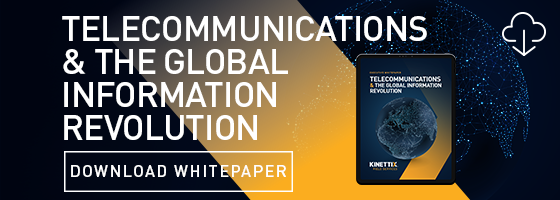Your brand matters. Your brand exemplifies what you do and how you do it. Say “Holiday Inn” and immediately think of clean sheets, convenient locations, and consistency. You say “McDonald’s,” and you think of hot fries, clean restrooms (hopefully), free wifi, and, oh, a decent burger.
Now, disclaimer, whether those or any businesses live up to their brand is another challenge and perhaps another topic for another day. If you got cold, soggy fries at your last visit to your favorite burger joint, it probably didn’t dent your long-held brand image of them. But if you continually get cold, soggy fries, it will.
At Kinettix, our brand is fast, reliable, IT field-level dispatch ability of any scale in any geographic location. 24/7 service and speed are part of our core values.
Whether you run a burger joint or are part of a sprawling telecom, your business should be able to pare its strategic identity down to a few core sentences. If you can’t, here are some questions to ask as you start focusing on your telecommunications strategy and strategic identity:
What Do You Do Best? Is your company known for customer support? Seamless experience? Speed? Security?
What Defines Your Company’s Culture? Some businesses strive for friendly customer service. Others may not, there’s not necessarily anything wrong with a gruff tech as long as they come in quickly and get the job done.
Where Are You Headed? It’s tough to plan 10 years out when you don’t know what’s around the corner 10 days from now, but you still need a basic, skeletal set of futuristic goals and objectives for what you’re trying to achieve. A New Jersey data analytics firm, ECS, recommends that telecoms “redefine your strategic identity (your value proposition) for the future — what you can expect to offer customers five or 10 years from now.”
Now that you have the answers to those questions, it’s time to develop your strategic identity.
5 Ways To Do A Telecom Strategic Identity Refresh
1. Plan For The Future: Tough to do when the present is so uncertain, but lack of planning can trip up the most seasoned legacy company. Accounting firm PricewaterhouseCoopers strategic consulting arm produced a thought-provoking report for telecom execs to consider about tweaking their brand identity.
If you are a telecom executive at this critical juncture, you need to make two different moves at the same time. First, begin the task of modernizing operations. Second, redefine your strategic identity (your value proposition) for the future — specifically, what you can expect to offer customers five or 10 years from now. It may well be — perhaps it should be — that after going through this journey, your company will look very different from today’s version.
2. Survey: A great place to start when refining your strategic identity is to survey your customers. There are plenty of free tools you can use to produce surveys. People are busy, so make them quick. No 50-question surveys. Boil down your survey to a few key questions. How can you refresh if you don’t know what you are trying to refresh? Your customer’s answers will be key. Find out what they are looking for, and perhaps you’ll find that the best solution is to partner with an external provider for field-level services, one that has access to a top-flight global talent pool.
3. Clarity: Often, the best answers are the most obvious answers. You need to be clear about what your company does. Montreal-based telecommunications firm Ubity cites the need for clarity as one of the three big takeaways from the annual Telecom Conference held in Boucherville, Quebec:
“The best companies seem to show an ability to brand themselves and their product and service offerings clearly, and adapt to the specific needs of their customers by well-defined and simple means.”
4. Alliances: Form strategic complementary alliances with partners that add value. Whether it’s teaming up with a financial services company, an entertainment provider, or an app, there are all sorts of options for value-added vertical integration.
5. Analytics: This would seem obvious, but often telecoms get so caught up in providing data to others that they ignore their own. Analyze customer data, and you may find areas where you are lacking, such as financial service offerings or streaming services. Conversely, you may discover hidden strengths to build upon.
Consider this vote for analytics application from a PwC analyst:
“The application of analytics is thus set to drive the business strategies of telecom players. In fact, telecom companies might look very different in the coming years depending upon the strategic identity they create for themselves.”






